The Rich History of the Islamic Center of Washington, D.C.
By Salma Heram, Arab America Contributing Writer
The Islamic Center of Washington, D.C. has been a cornerstone in the Muslim community in Washington, D.C. for centuries since its opening in the 1950s. The Arab diplomatic community played a crucial role in the building and establishment of the center, leaving an important legacy for years to come. Join us as we detail the history of this gorgeous structure in the heart of our nation’s capital.
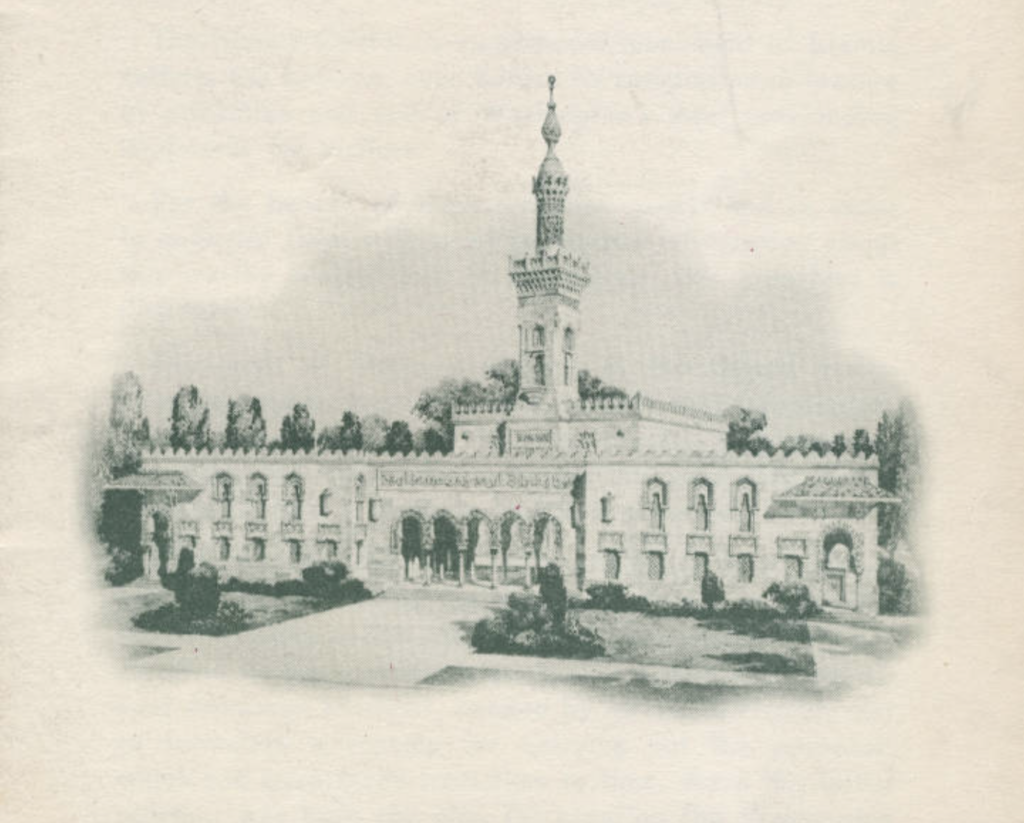
Establishment of the Islamic Center of Washington, D.C.
The need for the establishment of a mosque in Washington, D.C. was first realized in November 1944 upon the death of Turkish Ambassador to the United States, Mehmet Münir Ertegün, when there was no mosque to host his funeral. Upon this realization, Egyptian Ambassador Mahmood Hassan Pasha and Palestinian-American developer Joseph Howar, born Mohammad Issa Abu Al Hawa, set out to look for a space for a mosque to serve the D.C. community. Garnering the support of other prominent Muslims and ambassadors and representatives from Muslim countries, they established the Washington Mosque Foundation in 1945 to collect funds for the mosque and oversee its construction. They settled on a space on Massachusetts Avenue due to its proximity to international embassies, purchasing the land on April 30, 1946 for $95,000.
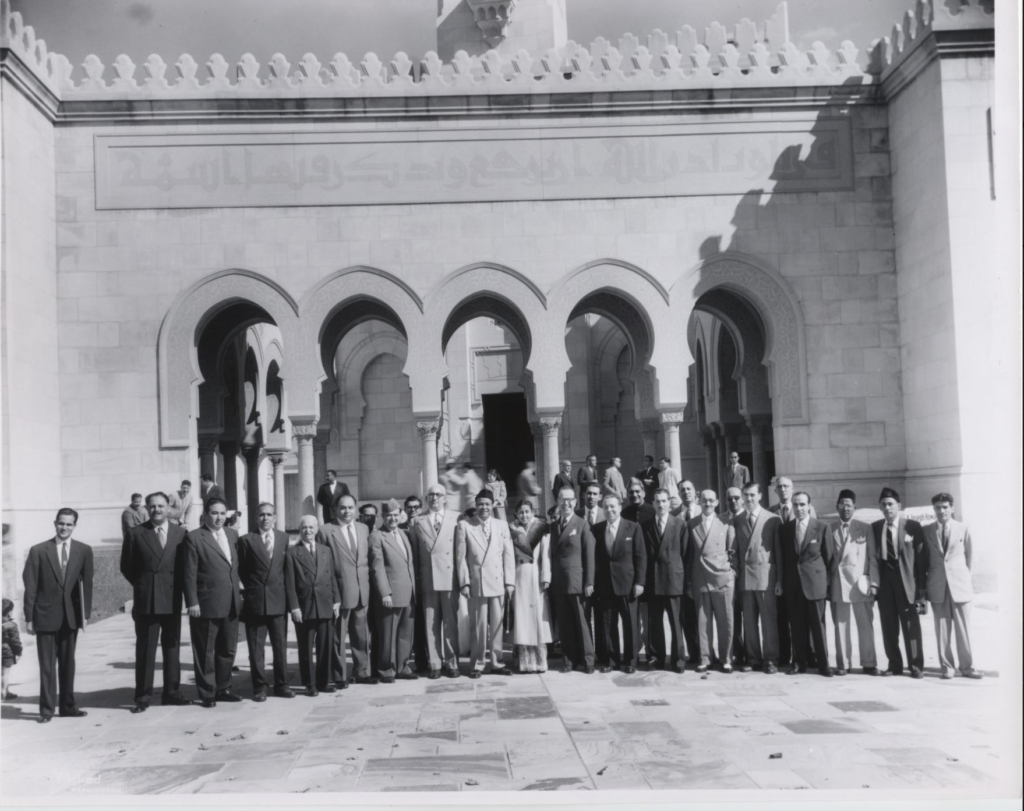
However, construction was halted until 1948, when Mohamed Kamil Abdel Rahim Bey replaced Mahmood Hassan Pasha as Ambassador of Egypt to the United States, and was appointed President of the Washington Mosque Foundation. The cornerstone of the mosque was laid on January 11, 1949, marking the birthday of Prophet Muhammad (Peace Be Upon Him). Aside from Ambassador Abdel Rahim Bey and Mr. Howar, who became treasurer of the Foundation, several dignitaries from involved Arab and Muslim countries participated in the cornerstone ceremony. This included Sheikh Asad Al-Faqih, Ambassador of Saudi Arabia; Minister Faiz El-Khouri of Syria; Mohammad Chouaib, Charge d’Affaires of the Embassy of Afghanistan; Ambassador Hussein Ala of Iran; Ambassador M. A. H. Ispahani of Pakistan; and Minister Abdullah Ibrahim Bakr of Iraq.
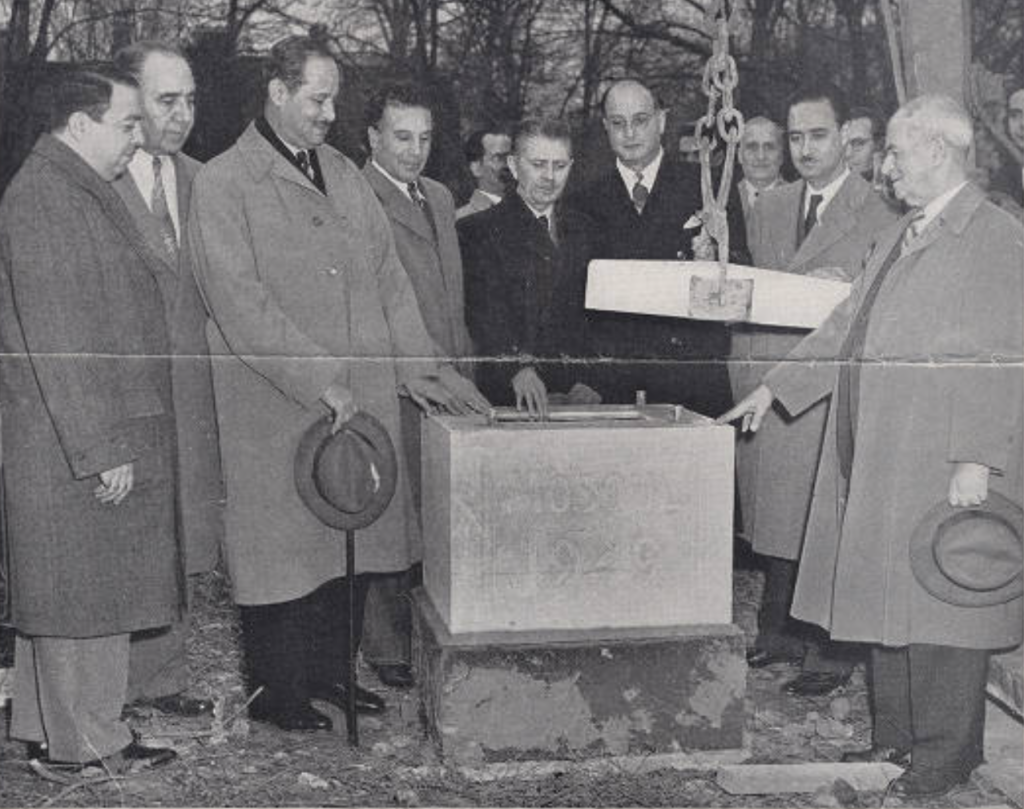
Construction and Design
The Islamic Center was designed by Mario Rossi, an Italian architect who built several mosques in Egypt and converted to Islam after a long career in the Middle East. The Islamic Center was his last major religious project, its exterior featuring the Egyptian Fatimid and Mamluk-era motifs often found in his work. Inside, the mosque’s grand bronze chandelier was donated by the Egyptian government, as well as the specialists who inscribed the mosque’s walls and ceilings with Quranic verses. The ornate tiles adorning the walls were donated by Turkey, while Iran donated the mosque’s Persian rugs. Outside, the Center’s open courtyard, characteristic of Mamluk-era architecture, features flags from Muslim countries around the world, including those integral in the development of the Islamic Center.
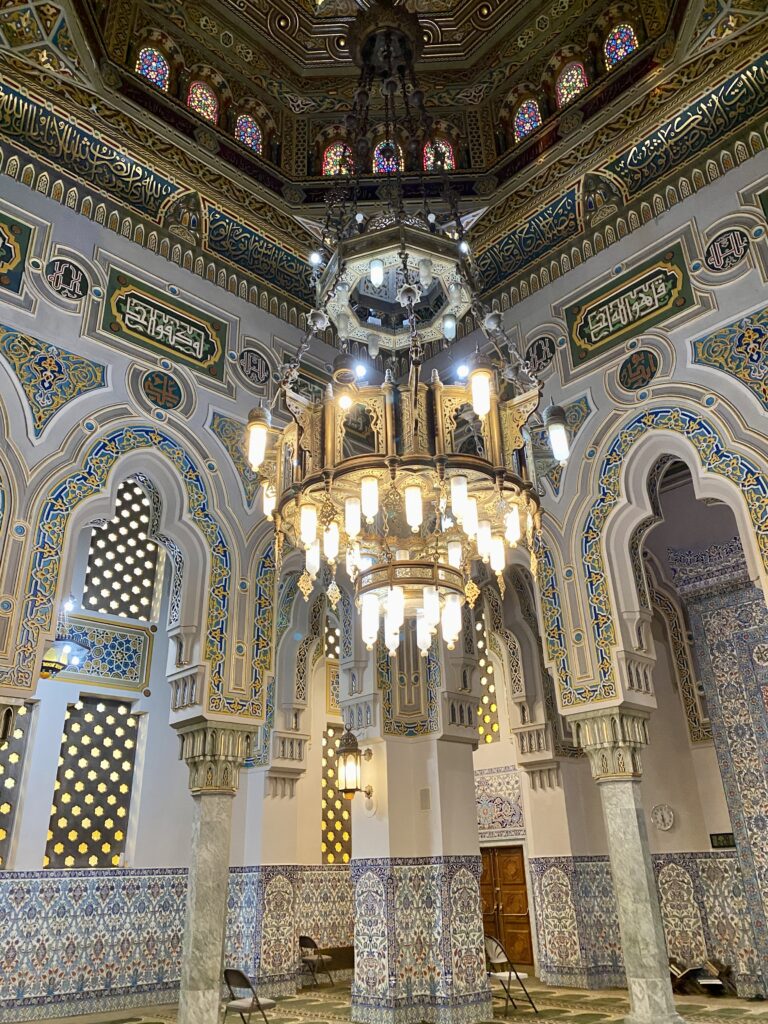
Relations with the U.S. Government
After the mosque’s completion, then President Dwight D. Eisenhower participated in the Islamic Center’s dedication ceremony on June 28, 1957. In his address, President Eisenhower praised the Islamic world’s “traditions of learning and rich culture” which have “for centuries contributed to the building of civilization,” emphasizing that “civilization owes to the Islamic world some of its most important tools and achievements.” He affirmed America’s founding principle of religious freedom and stated that: “America would fight with her whole strength for your right to have here your own church and worship according to your own conscience. This concept is indeed a part of America, and without that concept, we would be something else than what we are.” Eisenhower concluded: “As I stand beneath these graceful arches, surrounded on every side by friends from far and near, I am convinced that our common goals are both right and promising. Faithful to the demands of justice and of brotherhood, each working according to the lights of his own conscience, our world must advance along the paths of peace.”
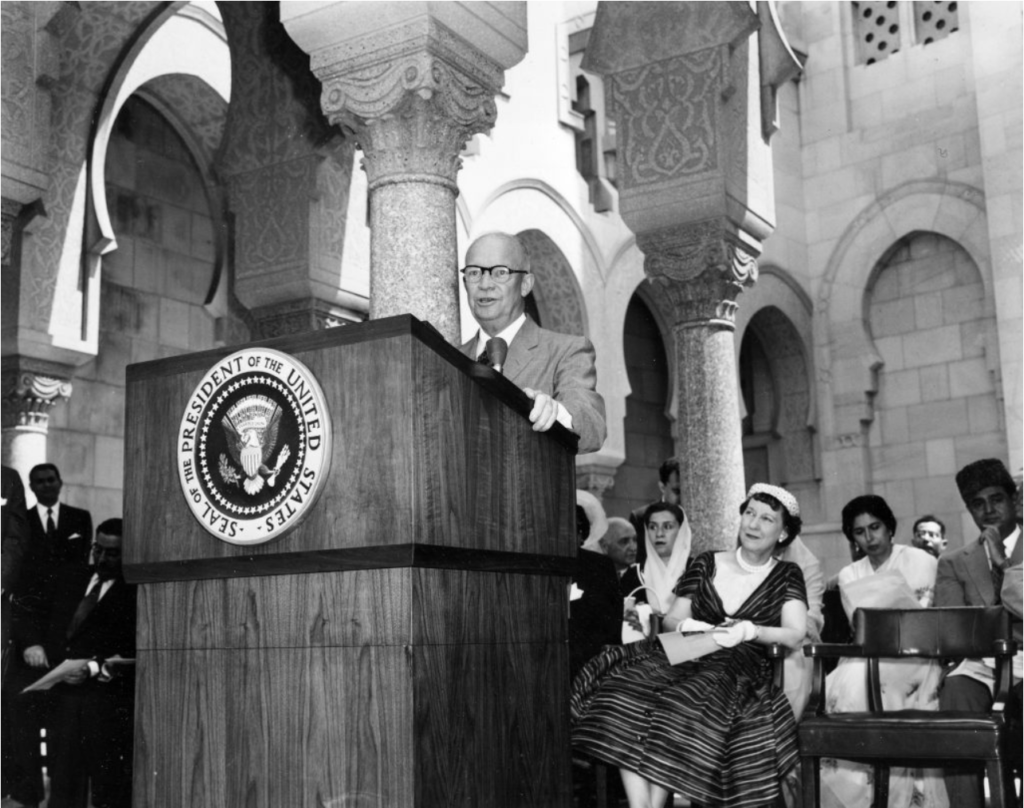
Many years later, following the attacks of September 11, 2001, President George W. Bush visited the mosque on September 17, appearing on national television. There, President Bush quoted from the Quran and sought to assure the American public that the vast majority of Muslims rejected the abhorrent terrorist acts of 9/11 and that Islam was a peaceful religion.
Legacy
Now, the Islamic Center holds daily and weekly prayers for the wider D.C. community, holding special community events for Islamic Holidays, embassy events, and bazaars for all to enjoy. It is important, however, to understand its rich, incredible history in order to further enjoy and appreciate the gloriousness of this incredible testimony to the strength and legacy of the Muslim American community.
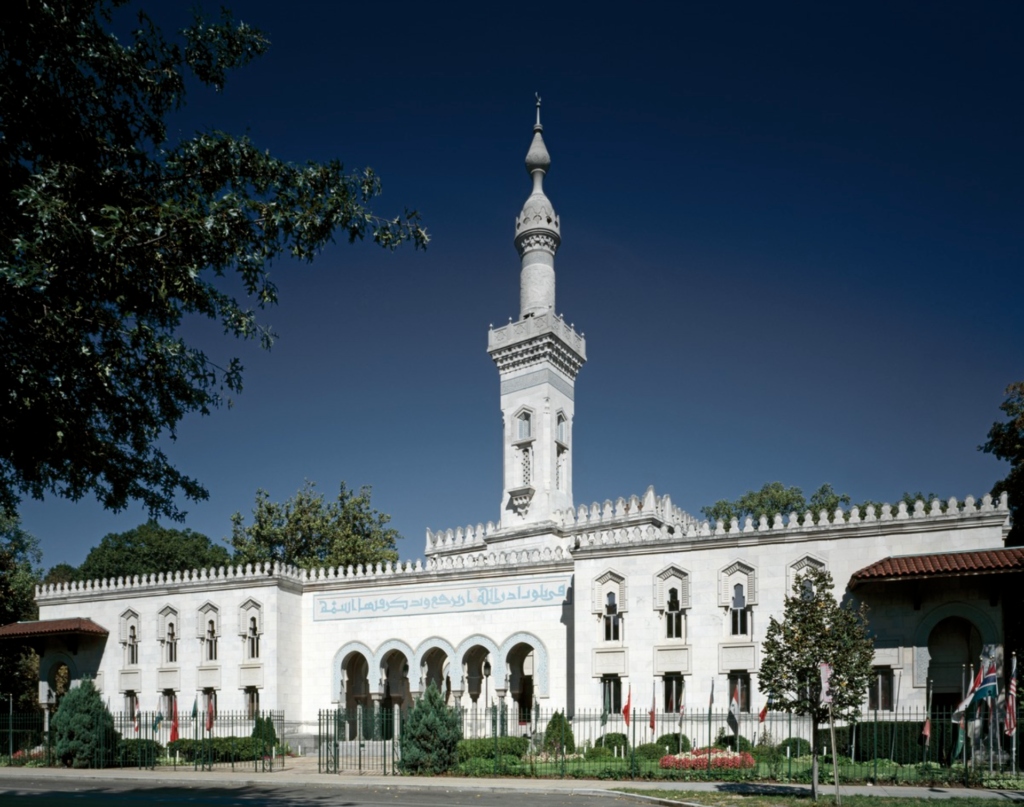
Sources:
A Look at the Islamic Center of Washington, D.C. – TeachMideast
Eisenhower dedicates D.C. Islamic Center, June 28, 1957 – POLITICO
Howar Family Collection – Digital Special Collections
Islamic Center of Washington DC
The Islamic Center Official WebsiteThe Mosque in Washington – The Islamic Monthly
Check out Arab America’s blog here!









